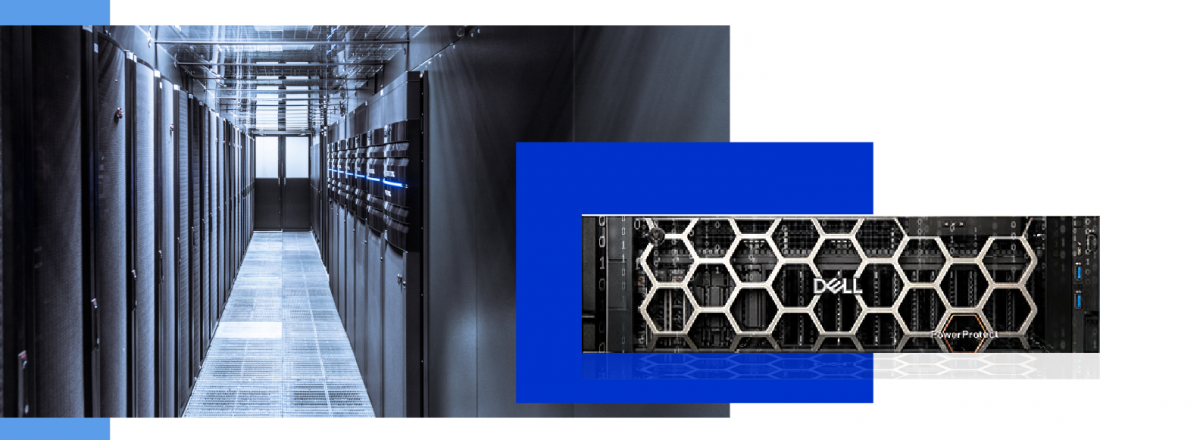In an era marked by the escalating threats of cybersecurity breaches and ever-increasing demands for data security standards, there arises a critical need for the implementation of new, effective solutions for safeguarding corporate assets. Succumbing to ransom demands from hackers not only fails to guarantee data recovery but also serves as an enticement for criminals to launch subsequent attacks. The solution to these challenges lies in the relocation of resources to an isolated environment – a digital bunker within the confines of Talex Data Center.
New Threats on the Horizon
The digital transformation has been underway for many years, representing an ongoing, relentless, and, above all, inevitable process. In today’s interconnected globalized world, remaining untouched by digitalization is simply inconceivable. Unfortunately, this state of affairs introduces a slew of new threats.
The image of masked robbers conducting a bank heist is now relegated to cinematic fiction. Audacious robberies may not be readily visible, but this does not imply their absence. Criminal modi operandi have simply evolved. The internet, replete with vulnerabilities and loopholes, offers hackers an expansive canvas for their exploits. Cybercrimes are on the rise each year, yet they occur discreetly and with a velvet touch, in stark contrast to the aforementioned bank heists.
Data – What Do Cyberattacks Look Like in Poland and Worldwide?
Numbers do not lie. Cyberattacks are becoming increasingly common, and the methods employed by hackers are becoming more sophisticated. It is estimated that in 2022 alone, companies worldwide incurred losses of approximately $6 trillion!
In Poland, the situation mirrors this global trend. The number of cyberattacks continues to rise steadily. According to a report from CERT Polska, in the first half of 2023, over 160,000 cybersecurity incidents were recorded, marking a 28% increase compared to the same period in the previous year.
At the heart of it all, hackers are simply thieves, and their primary objective, both historically and presently, is theft. In the cases discussed here, this involves the theft of data, followed by extortion. An increasing number of companies are opting to pay for the restoration of access to their data. However, experts caution that paying a ransom does not guarantee data recovery. This fact is supported by statistics – a staggering 41% of companies, despite delivering funds to cybercriminals, did not receive 100% of their stolen files in return. Furthermore, by paying ransoms, companies inadvertently support cybercriminals and incentivize them to launch further attacks.
And how much does all of this cost? According to data from NASK in 2023, the average cost of a cyberattack for a Polish company exceeded 1 million Polish zlotys. Of course, the impact of these attacks cannot be measured solely in currency. Let us not forget about crucial aspects such as reputational damage and the loss of trust from both current and prospective clients. Over time, these factors can also affect a company’s potential profits.

Methods of Hacker Attacks
There exist numerous methods employed by cybercriminals, and the specialists developing protective software are engaged in an ongoing arms race. It is precisely because of this that defending against attacks can be exceptionally challenging. Additionally, the human factor remains a crucial consideration. Over 90% of employees use their work computers for personal purposes, creating a vast operational field for hackers.
How do cybercriminals operate? Among the most common types of cyberattacks in Poland in 2023 were:
- Ransomware Attacks: These involve blocking access to data. Following a successful attack, hackers demand a ransom. Payment is supposed to result in the data being unlocked, but in 41% of cases, this does not happen.
- Phishing Attacks: Cybercriminals send email messages containing links or attachments with malicious software. In this scenario, hackers impersonate trusted institutions, such as banks, by using email addresses that resemble them, copying the visual design of such emails, and so on.
- DDoS Attacks: These involve overwhelming a server with network traffic, rendering it inoperative.
- Supply Chain Attacks: Criminals attempt to exploit weaknesses in the security of suppliers to gain access to data or infect software that may be used by the target company. This approach allows them to bypass the direct defenses of the target company and can lead to the spread of the attack on a wide scale throughout the supply chain.
- Attacks on Mobile Devices, such as smartphones and tablets: The tactics are similar to those mentioned above. The difference lies in the devices themselves, which is significant because attacks on mobile devices can serve as an entry point to other systems if these devices are connected to the company’s network. This means that smartphones and tablets should be just as well-protected as other corporate devices.
How to Defend Against Cybercrime?
How can one effectively defend themselves? Naturally, it is imperative to employ every feasible, tried-and-tested method of protection. Importantly, one should not confine themselves to just one or two measures. Given the myriad methods of attack, the defense system must be sufficiently comprehensive to close as many vulnerabilities as possible.
What steps should be taken?
- Regularly update software and operating systems. Updates often include patches that address known security vulnerabilities.
- Use strong passwords and two-factor authentication. Systems fortified with these measures significantly impede access by unauthorized individuals. It’s advisable to systematically enforce password changes for employees, for example, every three months.
- Implement firewalls and network filters. These solutions aid in controlling network traffic and blocking unauthorized access attempts. They also provide protection against DDoS attacks.
- Invest in antivirus and antimalware software licenses. Regularly scanning systems is essential for detecting and removing malicious software. Such programs often run in the background and scan devices without requiring employee intervention.
- Train and educate employees. Employees are often the weakest link in security matters. Hence, conducting regular training sessions on threat recognition and the use of good security practices is crucial.
- Monitor network traffic and respond to incidents. Implementing appropriate systems helps rapidly detect unusual activities, enabling immediate responses.
- Ensure the physical security of servers. Providing physical security for server rooms and other critical access points to systems is as important as digital security. For more on physical security, you can read here.
- Create backups and plan for their restoration. In the event of data loss or a ransomware attack, a company can recover a portion of lost data (without paying a ransom) and swiftly restore it.
- Conduct security audits. Regular security audits and penetration testing can help identify weaknesses in a company’s defenses and allow for improvements to be made before an attack occurs.
- Report incidents. Employees should be aware not only of threats but also of incident reporting procedures and suspicious activities. Reporting threats contributes to the escalation of issues and a proactive response.

We’ve already mentioned that the battle against hackers is an ongoing arms race. It’s important not to have any illusions: sometimes, cybercriminals may have the upper hand. This is especially true because every company is comprised of people, and the more employees, the more opportunities for an effective attack.
What then? Should you pay a ransom without any assurance that hackers will return the stolen or locked resources? Of course not – as long as the company’s data has been previously placed in the CyberBunker.
Dell Isolated Recovery at Talex Data Center – The Ultimate Line of Defense
Dell Isolated Recovery is an advanced solution designed to protect critical data from cybersecurity threats and hardware failures. It functions as a digital bunker, isolating data from the rest of the IT environment, ensuring maximum security.
This solution operates on the principle of data isolation, which means that resources are stored and managed in a separate environment, distinct from the main system. One significant advantage of this solution is the speed at which data can be restored in the event of a failure or cyberattack. This is of paramount importance, especially for businesses, where any moment of downtime can result in significant losses.
We can identify several key features of this solution:
- Isolation: Physical isolation in the secure environment of Talex Data Center.
- Data Duplication and “Air Gap”: Data replication and automatic disconnection from LAN/IP communication.
- Integrity Control and Alerts: Prevention of malicious software infections and early warning system.
- Recovery and Repair: Complete data recovery.
- Scalability: The solution can be tailored to the needs of any business.
It’s important to note that Cyber Recovery is not the same as Disaster Recovery (DR). These solutions protect data differently and safeguard against different types of threats. DR involves planning for actions in the event of the main data center of an organization being taken offline, for instance, due to a flood or a power outage. On the other hand, Cyber Recovery solutions exist to enhance the protection of backups and enable their swift recovery following more advanced cyberattacks.
Maximum security is also achievable thanks to Talex Data Center facilities. We are the only ones in Poland to possess two data centers certified with EN 50600 and ISO/IEC 22237 at the highest Tier 4 level. This translates to maximum physical security and ensures operational continuity.
The combination of Dell Isolated Recovery with Talex Data Center indeed forms a kind of vault, a Cyber Bunker, to which no unauthorized entity has access – both physically and digitally.

Security According to Dell and Talex – Get Webinars and an Ebook
Are you interested in the topic? Do you want to protect your company and place it in the Cyber Bunker? Visit our website and delve deeper into the Isolated Recovery solution.
On the website, you will find a collection of webinars by Dell experts on cybersecurity. Additionally, you will receive an ebook from us, prepared by Talex engineers, containing tips on cost-effective server room management without compromising its security.
Enjoy your reading!
